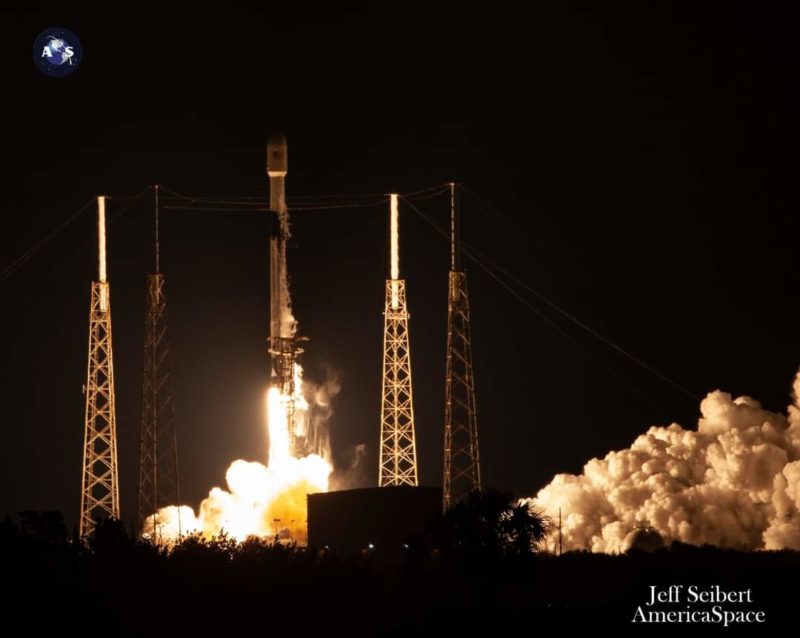
An unexpected record was set earlier today, when SpaceX relaunched a Falcon 9 within 27 days of its most recent mission. The flight-seasoned B1060 core stage—making her fifth overall flight in a little more than seven months—rose atop a pillar of brilliant golden flame from Space Launch Complex (SLC)-40 at Cape Canaveral Space Force Station, Fla., at 1:19 a.m. EST Thursday, to deliver 60 Starlink internet communications satellites into low-Earth orbit.
Nine minutes later, blackened and scorched from her latest high-energy re-entry, B1060 sat snugly on the deck of the Autonomous Spaceport Drone Ship (ASDS), “Of Course I Still Love You”, in the Atlantic Ocean, as SpaceX readies a second booster to loft another 60 Starlinks as soon as Feb 7 at 4:31am EST.
Today’s middle-of-the-night launch marked SpaceX’s fourth flight of 2021 and the last few weeks have already seen records broken, and broken again, for the shortest intervals ever recorded between two missions by the same orbital-class booster. Last month, B1051—embarking on a unique eighth flight for a single Falcon 9 core—roared aloft a record-setting 38 days since its most recent previous voyage.
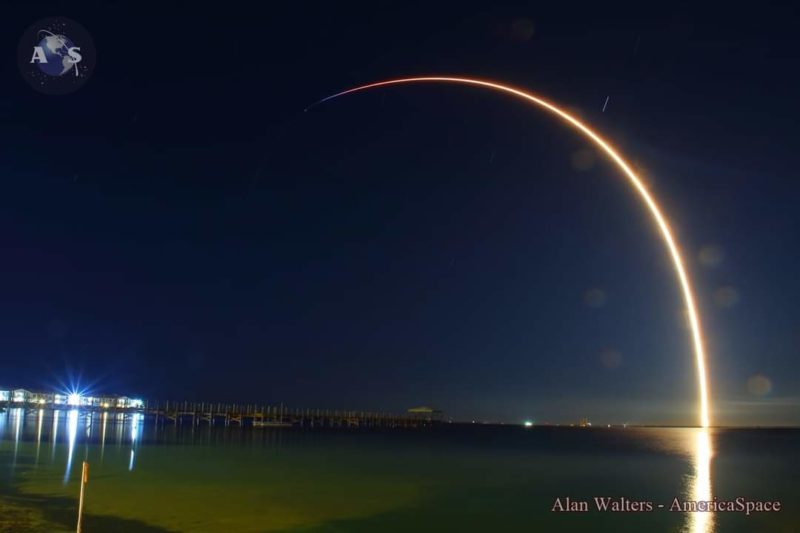
But records are there to be broken and SpaceX’s venerable fleet of boosters are certainly not allowing the grass to grow under their Merlin 1D+ engines. With this morning’s mission, B1060 became the first Falcon 9 to launch twice within one month, having previously launched Turkey’s powerful Türksat 5A geostationary communications satellite on 7 January, only 27 days, 4 hours and 4 minutes earlier. “Rapid reusability,” SpaceX tweeted, “is the key to reducing the cost of traveling to space.”
Conditions were near-perfect for B1060’s fifth launch, the 45th Weather Squadron at Patrick Space Force Base having identified a 90-percent probability of Mother Nature falling into line at T-0. “Nearly ideal conditions are expected for launch early Thursday morning as winds potentially drop to the single digits and radiational cooling maximizes,” it noted in its L-1 briefing. “Only a very slight concern for Liftoff Winds exists, should the low-pressure system move out slower than predicted.”
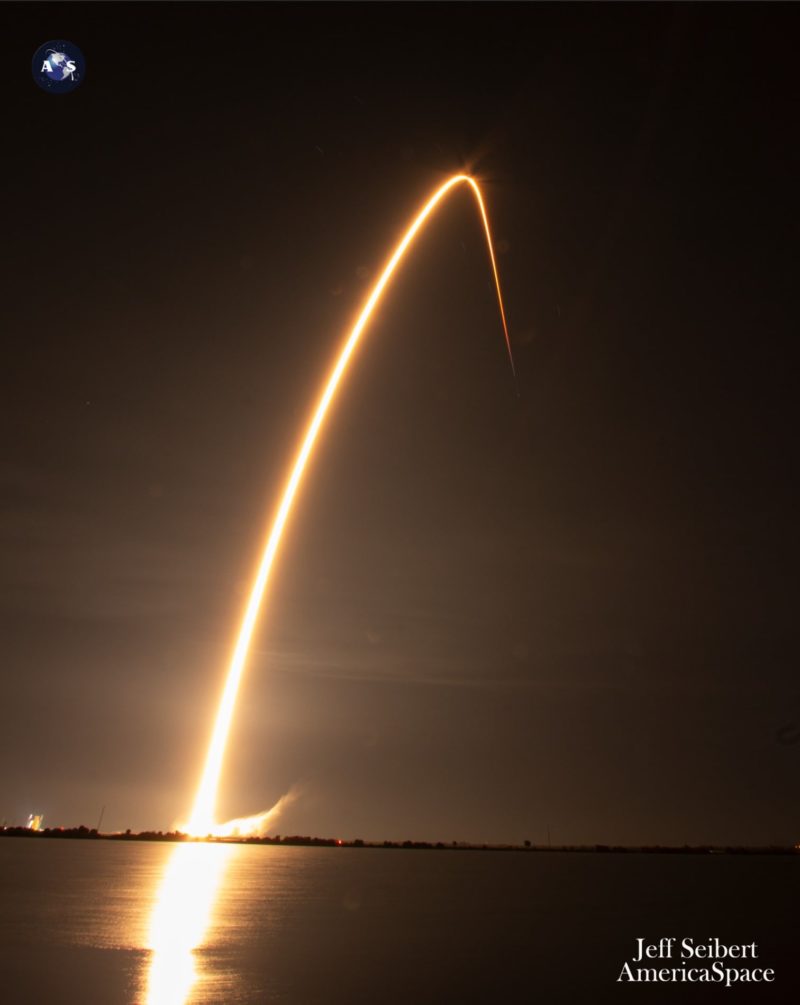
In less than 32 weeks, B1060 becomes only the sixth Falcon 9 core to fly a fifth mission. She first saw service last 30 June, providing the muscle to boost the Space Force’s third Block III Global Positioning System (GPS) navigation and timing satellite towards Medium Earth Orbit (MEO), about 12,550 miles (20,200 km) above the planet.
Nine weeks later, on 3 September she flew again—helping to cement a record for the shortest interval between two Falcon 9 missions from the Space Coast—and went on to fly a third mission on 24 October, both of which were laden with 60-strong batches of Starlinks. On this third flight, her voyage marked the 100th successful launch of a Falcon-class booster.
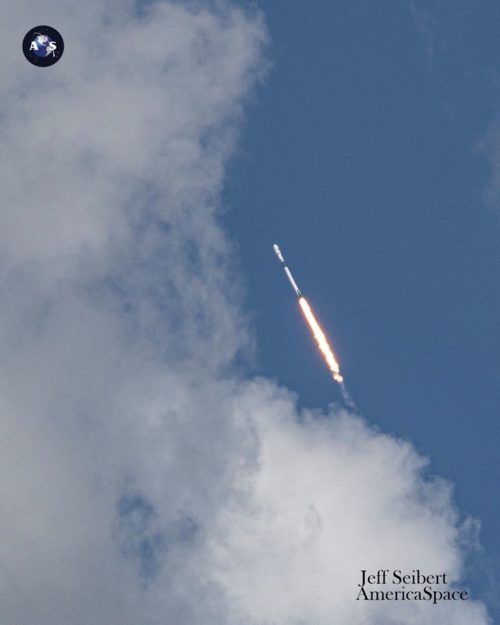
Her fourth flight last month sent the 7,700-pound (3,500 kg) Türksat 5A on the first leg of its trek up to geostationary altitude, some 22,300 miles (35,900 km) above Earth. With this morning’s launch, B1060 has flown five times in only 219 days, an empirical SpaceX record.
As outlined yesterday by AmericaSpace, original plans called for two Falcon 9 launches, each laden with 60 Starlinks, to be flown a little over four hours apart on Thursday, the first at 1:19 a.m. EST from SLC-40 and the second—to be flown by the veteran B1049 core—from historic Pad 39A at the Kennedy Space Center (KSC) at 5:36 a.m. EST. B1049 apparently endured an aborted Static Fire Test last Friday, before successfully firing up her nine Merlin 1D+ engines on Sunday, although her launch was slipped repeatedly from Tuesday and Wednesday, due to less-than-ideal recovery weather conditions.
Finally, on Wednesday afternoon SpaceX revealed that B1049 would have to endure yet another day of delay. “To allow additional time for pre-launch checks”, the Hawthorne, Calif.-headquartered organization explained, its launch was being moved to 5:14 a.m. EST Friday. And for the second time in less than six months, this eliminated the possibility of Falcon 9s flying twice on the same day.
SpaceX has since pushed the launch back to Feb 7 at 4:31am EST from pad 39A.
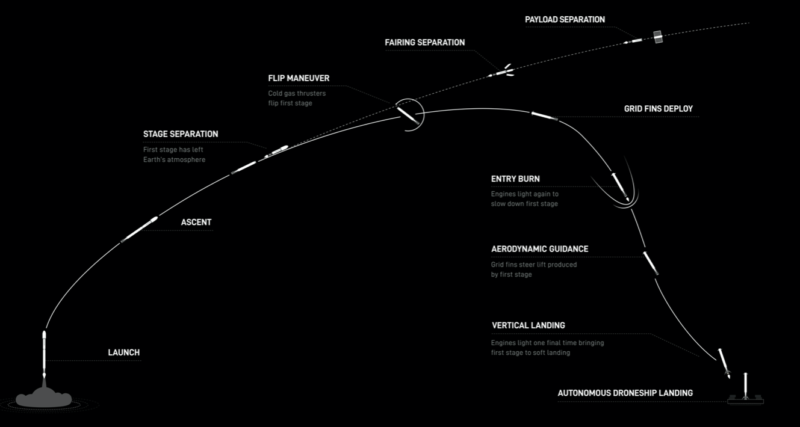
Following launch, B1049 is expected to alight a few minutes later on the ASDS “Just Read the Instructions”, situated about 390 miles (630 km) offshore in the Atlantic Ocean. The mission will mark a total of 190 Starlinks placed into orbit in less than 3 weeks, as well as wrapping up five Falcon 9 flights in the first five weeks of 2021, which positions the fleet suitably to accomplish SpaceX’s stated goal of 48 missions—almost one per week—by the end of the year.
Looking forward, there looks set to be at least one, and possibly two more Starlink missions in the coming weeks, potentially turning February into SpaceX’s second four-launch month.
.
FOLLOW AmericaSpace on Facebook and Twitter!
.
Missions » Commercial Space » Starlink »




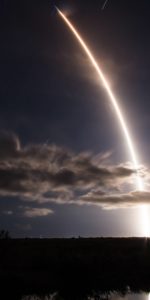
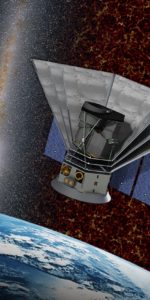
Did anybody get a good picture of the Falcon 9 first stage booster coming down from the ITL road on the Cape on 4 Feb 2021? I am looking for a picture of the booster. You could see it very clearly from the ITL.
John